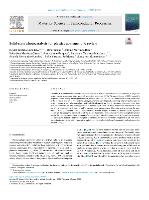Abstract
The COVID-19 pandemic has caused a dramatic increase in plastic wastes associated with the use of single-use masks, gloves, gowns, and other personal protective equipment (PPE). The accumulation of PPE, especially single-use masks, end up polluting environment, causing harm mainly to aquatic and terrestrial ecosystems. Due to the enormous concern about plastic pollution, many efforts are being made to develop efficient technologies to tackle it, among which solid-state photocatalysis is highlighted. Even though the outstanding results that have been obtained with the solid-state application of photocatalysis, there are fewer publications and reports on the use of it in comparison with aqueous and/or gaseous phase photocatalysis. Then, this review presents the most relevant works published on this topic and provide an in-depth analysis of solid-state photocatalysis for plastic abatement, including the incorporation of the usually hydrophilic photocatalyst into the hydrophobic plastic matrix, the common experimental procedures for evaluating its effectiveness (gravimetric, optical, spectroscopic, and mechanical methods) and the description of the intricate reaction mechanism suggested so far. The aim is increasing the awareness on this innovative topic among the academic/industrial community and advancing the
research thereon.














